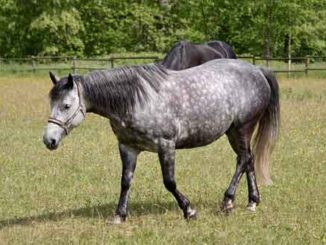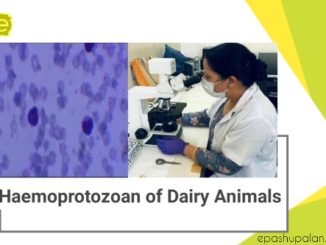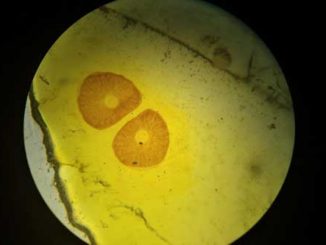Cystic ovarian disease is still a major concern in the country leading to increase in reproduction failure which ultimately leads to severe economic loss to dairy sector because it increases rearing cost of unproductive animals, day-open in the postpartum period and culling rates. The disease process is a consequence of a mature follicle that fails to ovulate at the appointed time of ovulation in the oestrous cycle. This anovulatory follicular structure either regresses or persists as a follicular or luteal cyst depending upon its structural/functional characteristics. The reported incidence ranges between 6.7% and 13.1%. 70% of the ovarian cysts occur between days 16 and 50 after calving, with the highest occurrence between days 30 and 40 after calving. Cows with abnormal postpartum conditions including retained fetal membranes, metritis, ketosis, and lameness are more likely to develop COD than cows having a disease-free postpartum period (Brito et al., 2004).
So the need of the hour apart from treatment is to minimise its occurrence by management of factors responsible for its occurrence
Predisposing Factors responsible for cystic condition
- Hereditary predisposition
Higher incidence in dairy breeds as compared to draught breeds and certain bulls produce the daughters which have higher incidence of cystic ovaries
- Age
Incidence increase with advancement of age as the incidence is higher in that lactation in which milk yield is in peak. Therefore ovarian cyst is uncommon in first lactation
- Housing
The housing of cows is a significant risk factor. For example, Opsomer et al., (2000) identified a 5.7 greater risk of succumbing to ovarian cysts in dairy cattle when calving takes place indoors compared to pasture calving. Simensen et al., (2010) identified more ovarian cysts diagnoses in free-stalls compared to tie-stalls grazing systems.
- Nutrition
There are higher incidence of ovarian cysts in dairy cattle during the early postpartum period, as that is the period when animals display negative energy balance (NEB). In the first stage of lactation, a higher milk yield generates severe NEB leading to ovarian cyst. Feeding higher protein diet also increases incidence of the condition
- Stress
Stress can be a significant contributor for the development of ovarian cysts. Ortega et al., (2015) explained the mechanism of the stress factors in terms of developing ovarian cysts. First, adrenocorticotrophic hormone (ACTH) stimulates the release of cortisol and progesterone. Enhanced secretion of progesterone inhibits the release of GnRH whereas, at the same time, the increased secretion of cortisol reduces estradiol secretion and receptors to luteinizing hormone in antral follicles. Subsequently the positive feedback of estradiol on the hypothalamus and the pituitary is deteriorated, the LH flow is suppressed, the ovulation does not ensue and the follicle becomes cystic.
- Puerperium disorders
Such as twinning, retained placenta, primary metritis, and ketonuria, as well as any combination of these conditions (Bors et al., 2020).

Strategies to minimize the cystic condition
- Selective breeding
A hereditary predisposition has been implicated in dairy cows to cystic ovarian condition. The most obvious methods to reduce the incidence of ovarian cysts would be through genetic selection via culling of bulls used in artificial insemination whose daughters are having high incidence of cystic condition and to cull the cows and offspring of cows that develop ovarian cysts. However, progress in reducing the incidence of ovarian cysts would be slow because the heritability is generally low.
- Improving Nutrition status of the animal
A key risk factor that causes increased incidence of cystic ovarian disease is low negative energy balance (NEB). Thus, nutritional management of the cow in the transition period has a crucial role to play in improving reproductive efficiency, because acute nutritional deprivation has immediate deleterious effects on follicular growth and ovulation. High protein diet is also a predisposing factor so optimum concentration of protein should be fed to the animal.
- Stress management
Temperature and humidity levels determine when a cow may start feeling stressed Shade and proper ventilation are critical to lowering the incidence of heat stress. Providing clean water is important especially during warm weather. Monitor ventilation systems to ensure that they are running properly and during cold weather protect animals from the wind and animal should be housed properly with adequate spacing.
- Management of puerperium disorders
Health monitoring of postpartum cows during the first few weeks after calving is crucial. Sound management, thorough preventative protocols, and treatment of post-partum disorders associated with calving such as ketosis, milk fever, uterine infections, retained fetal membranes, displaced abomasum and udder edema, is required to reduce the unnecessary use of antibiotics and hormones. High reproductive efficiency requires long-term planning, the implementation of good preventative measures to decrease puerperium disorders.
Conclusion
The best way to minimise the occurrence of cystic ovarian condition is selective breeding by using only such bulls whose daughters have shown low incidence of ovarian cyst and provide optimum nutrition to the animal during puerperium, as it mostly occurs in this period.
References
- Bors SI, Bors A. Ovarian cysts, an anovulatory condition in dairy cattle. J Vet Med Sci. 2020;82(10):1515-1522.
- Brito, Leonardo & Palmer, Colin. (2004). Cystic ovarian disease in cattle. Large Animal Rounds. 4.
- Opsomer G., Gröhn Y. T., Hertl J., Coryn M., Deluyker H., de Kruif A.2000. Risk factors for post partum ovarian dysfunction in high producing dairy cows in Belgium: a field study. Theriogenology 53: 841–857.
- Ortega H. H., Marelli B. E., Rey F., Amweg A. N., Díaz P. U., Stangaferro M. L., Salvetti N. R.2015. Molecular aspects of bovine cystic ovarian disease pathogenesis. Reproduction 149: R251–R264.
- Simensen E., Østerås O., Bøe K. E., Kielland C., Ruud L. E., Naess G.2010. Housing system and herd size interactions in Norwegian dairy herds; associations with performance and disease incidence. Acta Vet. Scand. 52: 14.






Be the first to comment